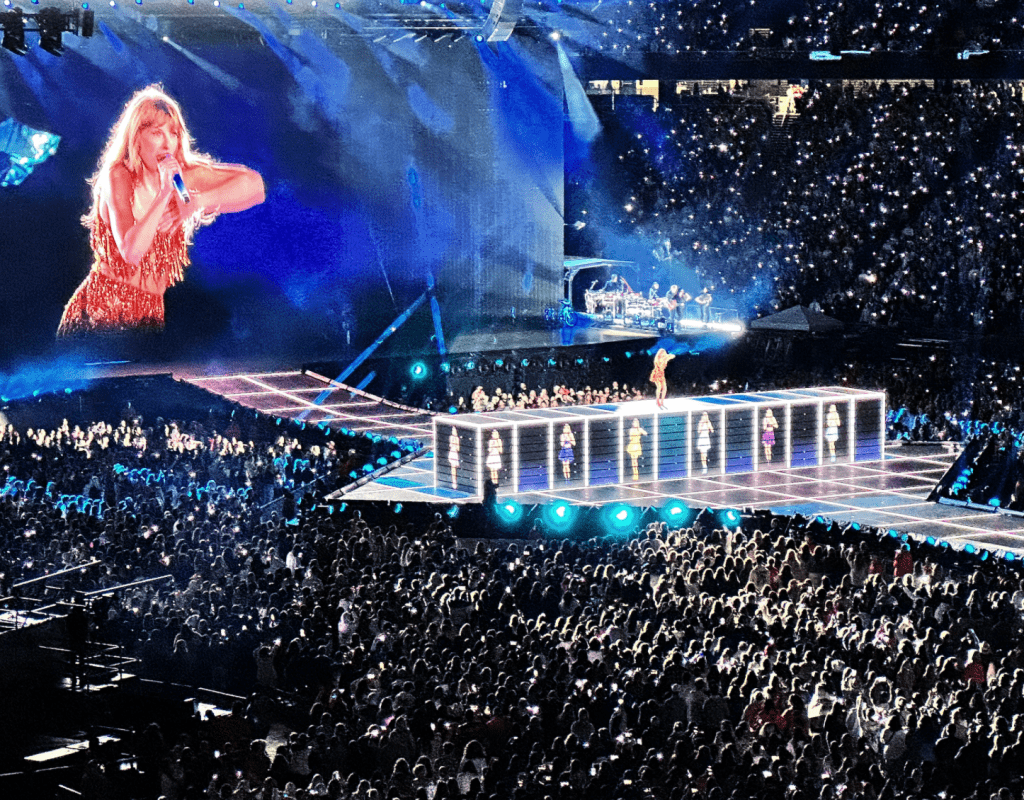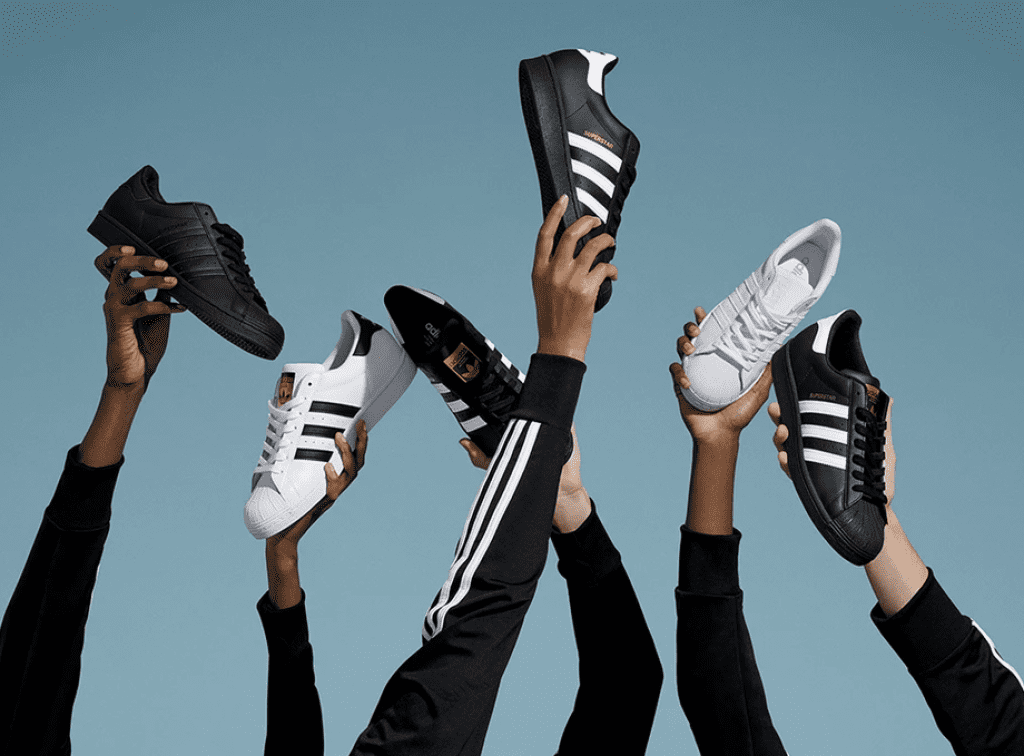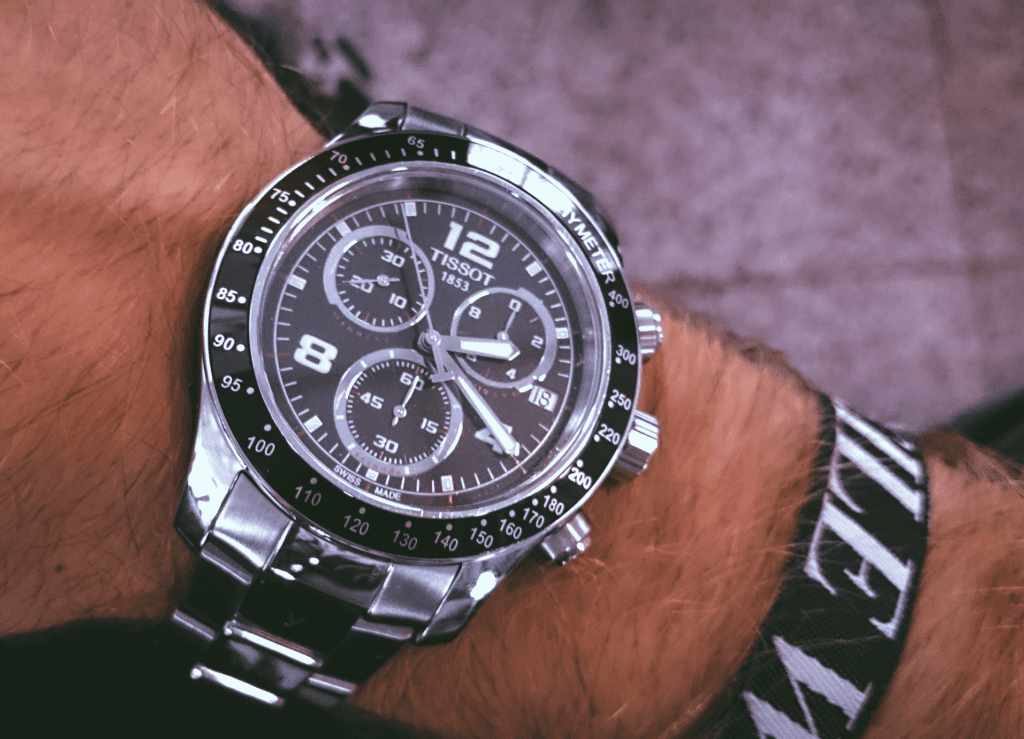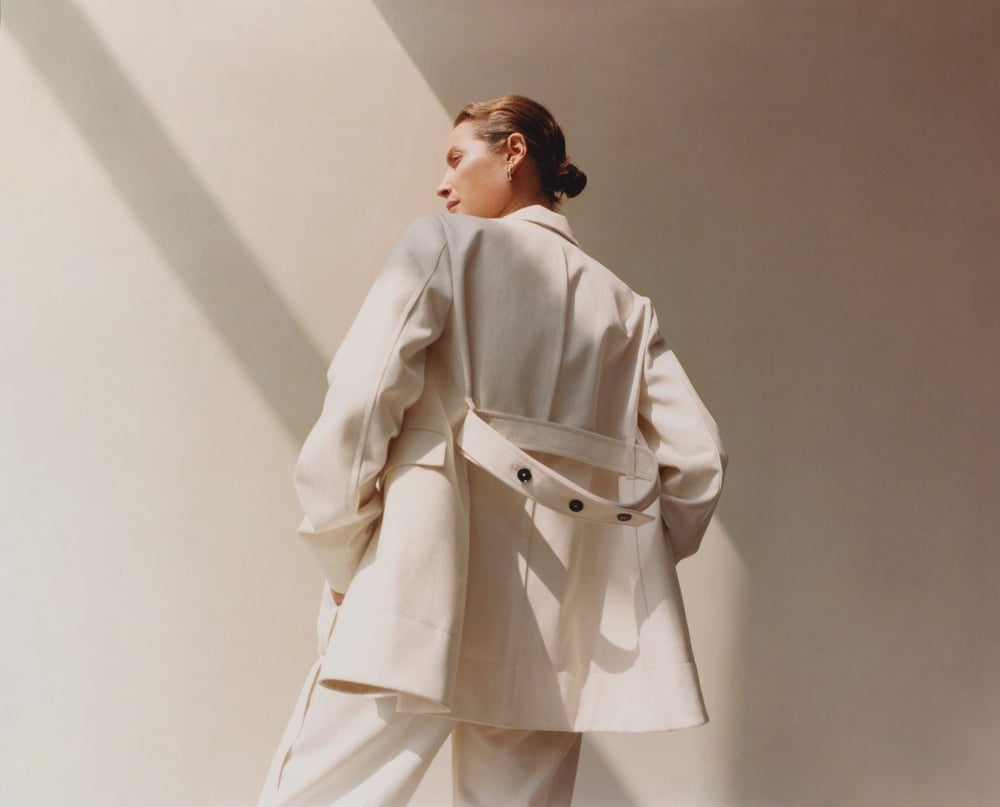As of late, almost everything that Taylor Swift touches – or better yet, wears – seems to turn to gold. One example: The pair of crystal-emblazoned denim shorts that she wore to watch boyfriend Travis Kelce and the Kansas City Chiefs play the New York Jets on October 1 quickly became a hot commodity. Not long after the game and the corresponding media frenzy, the $695 shorts by New York-based brand AREA were sold out on the brand’s website, Farfetch, Mode Sens, and other the e-commerce platforms that had previously had them in stock. Such a Swift-induced surge in demand has played out in response to other items worn by the mega-star – from a Chiefs windbreaker, which also sold out, to Kelce jerseys, demand for which has sky-rocketed in recent weeks.
Against this background, no shortage of brands – seeing Taylor Swift as the cash cow that she is – are taking the opportunity to align themselves with her, including by showcasing her outfits on social media and beyond. Fashion company Vince, for one, has posted street style photos of Swift in its clothing to its Instagram account, Outdoor Voices promoted its MegaFleece by posting (and subsequently deleting) images of Swift wearing the fleece in her Folklore album artwork, Gant promoted a photo of Swift in one of its trench coats on Instagram, and Stella McCartney posted paparazzi-captured images to its account of Swift toting one of its bags, among many other examples. And not limited to denim shorts, cargo pants, handbags, and jackets, Fox Rothschild’s Elizabeth Patton stated in a recent note that “local businesses [in and around Kansas City] can’t help but post online about her having frequented their establishment, eaten their food, or hired their services.” Even Hidden Valley Ranch has looked to benefit (to some extent) from Swift’s star power.
The Potential Problems
Parlaying the outsized appeal of Swift into brand awareness and sales may appear to be a sure-fire win for consumer goods companies – whether they make Ranch dressing or fleece jackets – given the striking level of influence that Swift boasts among hundreds of millions of people. (For some perspective: Swift has 275 million followers on Instagram, alone, and is expected to sell more than $1 billion worth of tickets for her ongoing Eras tour.)
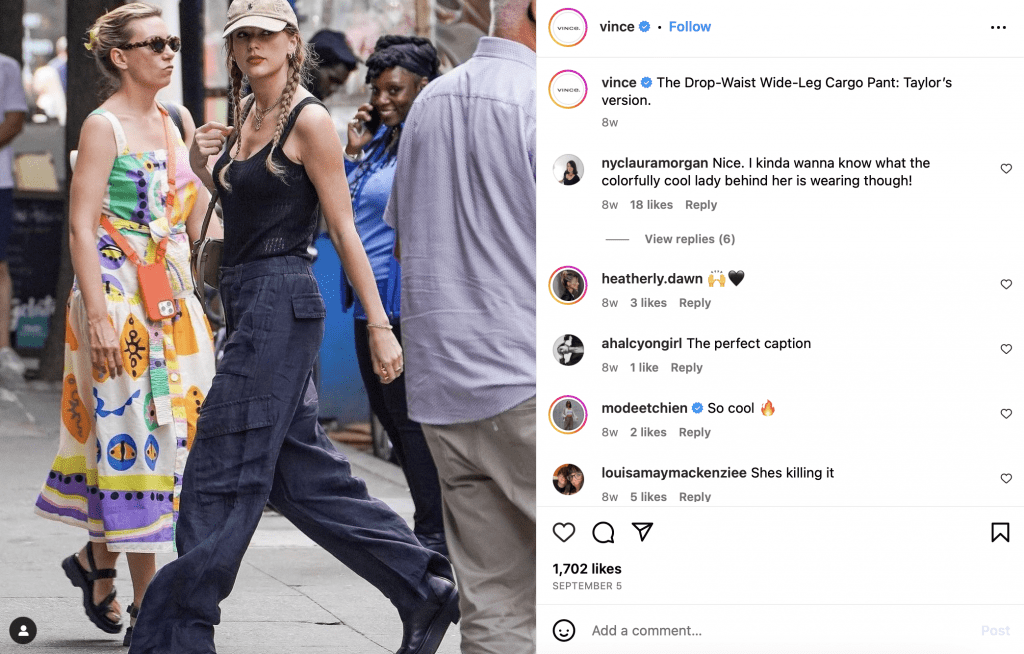
However, the strategy of using Swift as the unwitting face of a brand is not without potentially significant consequences – both from a copyright infringement perspective and a right of publicity one.
On the copyright front, there has been at least one Swift-specific example thus far: Photographer Jackson Lee recently filed suit against Jennifer Meyer, Inc., accusing the jewelry company of “copying and/or displaying” a photo of Swift wearing a pair of the brand’s earrings on its website. According to his November 2 complaint, Lee claims that he took – and maintains a copyright registration for – the image of Swift that Jennifer Meyer added to the Press section of its website without licensing the image or otherwise receiving his authorization to use it, thereby, infringing his copyright in the photo. That case is currently underway in the U.S. District Court for the Central District of California.
Looking beyond copyright claims that can be made by third-party photographers (like Lee) over unlicensed uses of photos of Taylor Swift by brands looking to promote their wares, there are also claims that Swift could hypothetically make on her own behalf. For one thing, she might be able to make copyright claims of her own in the event that things like photos or song lyrics for which she maintains rights are used without her authorization.
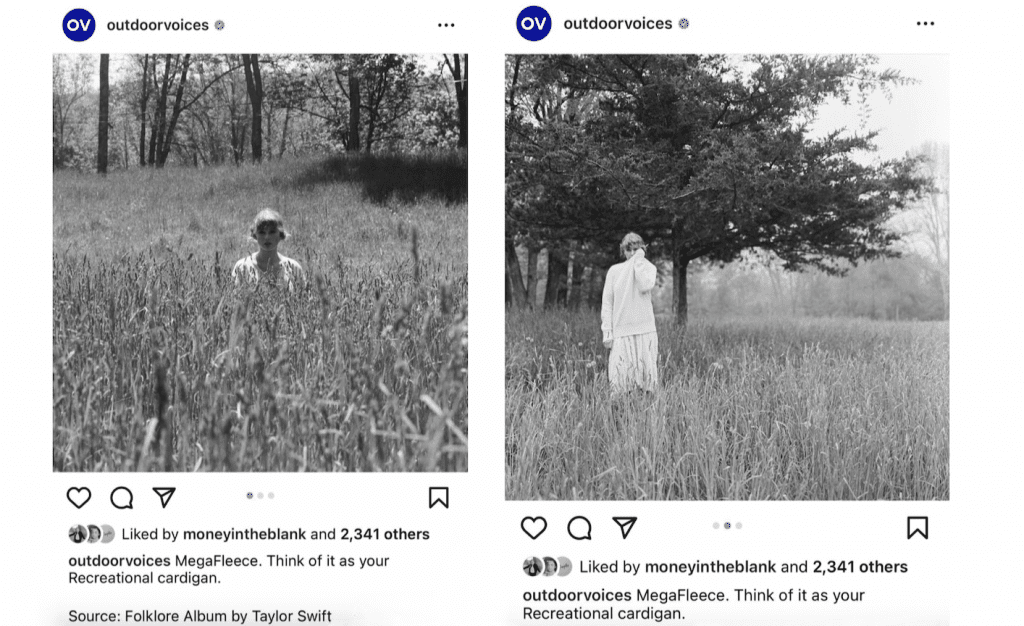
But maybe more interestingly, Swift can potentially make right of publicity claims in response to commercial uses of her name and/or likeness that she did not authorize. The Outdoor Voices images come to mind here, as while Swift is, in fact, wearing the brand’s apparel in the images at issue (the artwork for her 2020 Folklore album), that does not automatically give a brand the right to use the images for its own marketing and/or advertising purposes.
The problem in such a scenario stems largely from the right of publicity, which generally enables individuals – like Swift – to control the commercial use of their personal characteristics, and thus, prohibits the unauthorized use of an individual’s name, likeness, or other recognizable aspects of their persona for commercial purposes.
Right of Publicity
If Swift were to file suit against any of the companies using images of her to promote their goods/services, she would certainly not be the first famous name to do so. You may recall the oft-cited case that actress Katherine Heigl waged against Duane Reade back in 2014 after the drug store chain posted a paparazzi-captured photo of the actress carrying two Duane Reade bags outside of one of its stores along with the caption, “Love a quick #DuaneReade run? Even @KatieHeigl can’t resist shopping NYC’s favorite drugstore.” Duane Reade’s use of her image “under these circumstances improperly exploited [her] name and likeness, as a celebrity, for [its] commercial advertising and purposes of trade, without authorization,” and inaccurately implied – and was likely to confuse consumers into believing – that she “sponsors, endorses, or is affiliated with [its] goods and services,” Heigl argued, seeking $6 million in compensatory and punitive damages.
Heigel accused Duane Reade of violating New York Civil Rights Law Sections 50 and 51, which protect against the unauthorized use of another’s likeness for a commercial purpose, and engaging in common law unfair competition. Additionally, she set out a claim under Section 43(a) of the Lanham Act, which prohibits false advertising, on the basis that Duane Reade “made a false or misleading representation of fact in commerce in connection with goods or services that is likely to cause consumer confusion as to the origin, sponsorship, or approval of the goods or services.” In short: By using her name and the image, Duane Reade inaccurately “implied falsely that [she] endorses” the company.
That case ultimately resulted in a confidential settlement but based on previous outcomes in similar cases (including ones that pitted Michael Jordan against supermarket chains Jewel-Osco and Dominick’s), the law was almost certainly on Heigl’s side – and the same could go for Swift should she opt to take legal action in court or behind the scenes.
This is all to say that brands should approach such seemingly perfect advertising opportunities with caution, particularly in light of the fact that more than half of U.S. states currently recognize the right of publicity and find that the unauthorized commercial use of a protected aspect of a person’s identity is a violation of that right – save for some exceptions. Companies are further encouraged to think twice before co-opting celebrities’ likenesses, since, as Venable’s Armand Zottola and Channing Gatewood note, “A rights holder is generally not required to show proof of actual damages to succeed in a right of publicity claim.” As a result, liability for brands that misappropriate this right “can be costly if the violation is proved, despite a lack of financial harm to the rights holder.”




